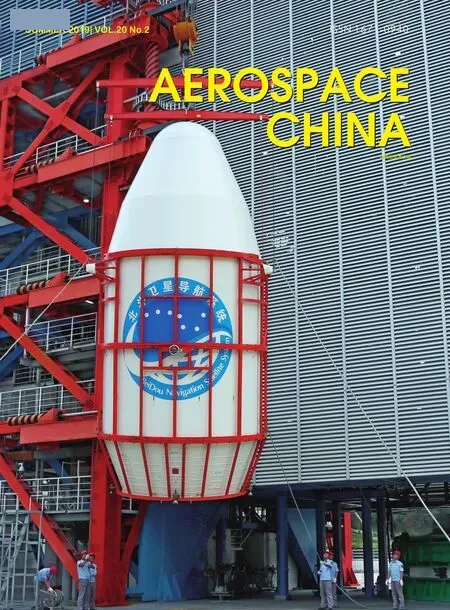China Completes First Seaborne Launch Technology Experiment
A LM-11 carrier rocket named the CZ-11 WEY was launched at 12:06 Beijing time on June 5, 2019 from a mobile launch platform in the Yellow Sea, successfully sending two technology experimental satellites Bufeng-1A and Bufeng-1B and five commercial satellites into their preset orbits. This is China's first seaborne launch technology experiment which was a completely success. It can meet the requirement for different inclination satellite launches and promotes the development of commercial space in China.
The LM-11 solid propellant carrier rocket utilized civilian ships as the launch platform, realizing an integration of space+maritime technologies for the first time, achieving breakthroughs in key technologies such as the stability, safety and reliability of sea launch, explored the management mode, and verified the capability of China's sea launch.
Launching a rocket from the sea has the advantages of high flexibility, good adaptability, and excellent launch economy. It can effectively resolve the safety issues of a landing area launch by flexibly selecting the launching point and landing area, and meet the launch requirements for various orbital payloads, assisting China provide commercial launch services for countries participating in the Belt and Road Initiative.
Bufeng-1A and Bufeng-1B satellites are expected to increase the all-weather monitoring of ocean wind fields and improve typhoon monitoring and accuracy for weather forecasting in China. Compared with the existing meteorological monitoring methods, the satellites use the L-band in the navigation satellite to detect wind field, with good atmospheric penetration characteristic, and are able to obtain all-day underlying wind field data which is of importance for typhoon forecasting, providing meteorological security and disaster prevention and mitigation services for countries participating in the Belt and Road Initiative.
The five commercial satellites are mainly used to conduct in-orbit verification of technologies such as Earth remote sensing, navigation, data communications transmission and the microsatellite platform.
The China National Space Administration (CNSA) was responsible for the organization, management and overall coordination of the seaborne launch technology experiment. The LM-11 carrier rocket was developed by the China Academy of Launch Vehicle Technology(CALT) and the Bufeng-1 satellites were developed by the China Academy of Space Technology (CAST). Marine engineering enterprises were responsible for the ship launch platform and the China Satellite Launch and Tracking Control General (CLTC) was responsible for the implementation of launch and TT&C mission.
Up to now, the LM-11 solid carrier rocket has conducted a total of seven launches, of which six were launched from land and one from sea, reflecting the high performance and reliability of the rocket with a 100% success rate.
As an explorer in Chinese commercial space, LM-11 can provide various satellite launch services such as those of a space shuttle, space special car and space car sharing. The launch also tried title sponsorship as a cooperation means for the first time with a named carrier rocket CZ-11 WEY, building a diversified commercial space system.
This was the 306th flight of the LM launch vehicle family. (CHEN Li/China Space News)

The LM-11 carrier rocket is soaring up into spacePhoto: SHI Xiao
- Aerospace China的其它文章
- LM-3C Conducts 200th Launch for CALT, Completing BeiDou 2 Satellite Navigation System
- ISU Guests Visit CASC
- First Experiments Selected for China's Space Station
- China and Russia Furthers Space Cooperation
- LM-3A Carrier Rocket Family Achieved 100 Flights
- LM-4B Sends Tianhui 2 Satellite into Orbit

